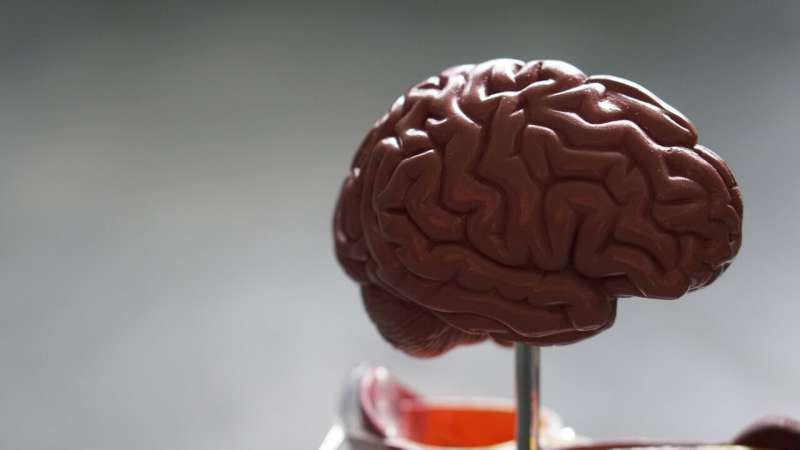Study provides insights into architecture of abnormal protein deposits in brain disorders

Scientists at the Case Western Reserve University School of Medicine have determined the structure of protein "fibrils" linked to Lou Gehrig's disease and other neurodegenerative disorders—findings that provide clues to how toxic proteins clump and spread between nerve cells in the brain.
Their results may also lead to developing drugs to treat diseases such as amyotrophic lateral sclerosis (ALS) and frontotemporal dementia (FTD).
"These devastatingbraindisorders that affect tens of thousands of Americans are on the rise worldwide, and there are no effective treatments to stop their progression," said Witold Surewicz, a professor in the Department of Physiology and Biophysics at the School of Medicine and the study's senior author.
The study was published March 12 in the online journalNature Communications. Qiuye Li, a graduate student in the department, was lead author; Case Western Reserve medical student Michael Babinchak contributed.
The study was supported by the National Institutes of Health.
TDP-43 is normally a soluble protein that interacts with nucleic acids. However, in several neurodegenerative disorders, this protein forms large, harmful rope-like clumps that accumulate in brains of afflicted patients.
These abnormal structures, known as amyloid fibrils, are a signature of brain pathology in amyotrophic lateral sclerosis (ALS; also called Lou Gehrig's disease) and FTD, the most common cause of dementia in people at younger ages—in their 50s and 60s.
Similar fibrilar structures of TDP-43 are also linked to other brain disorders, including Alzheimer's disease and chronic traumatic encephalopathy, a condition caused by repeated brain injuries and often found in athletes who played football and other contact sports.
By using a technique of electron microscopy at very low temperature (cryo-electron microscopy), the authors analyzed thousands of images of fibrils formed in the test tube by the key fragment of TDP-43. They determined the complex architecture of these elongated structure at a resolution close to individual atoms. This structural insight revealed, among other findings, the nature of the template on which more copies of TDP-43 can lock.
Based on this structural model, the researchers also discussed how the fibrilstructurecould be controlled by amino acid mutations in TDP-43 linked to hereditary forms of ALS and FTD, as well as by aging-dependent modifications of the protein.
"This is really an exciting development because it reveals a mechanism for the growth of these toxic aggregates," Li said.
"This, in turn, provides important clues as to how these aggregates may spread between the cells in affected brains."
"Detailed knowledge about fibrillar structures formed by TDP-43 may also lead to the development of drugs to treat these devastating brain disorders," Surewicz said.
Explore further















